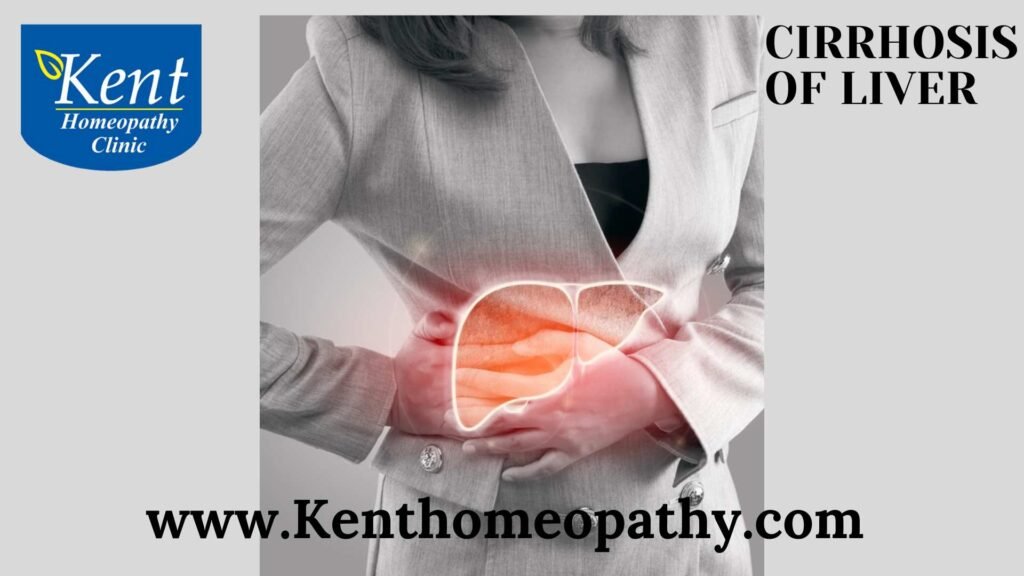Chronic liver disease

Chronic liver disease
Chronic Liver Disease
Chronic liver disease represents a broad category of conditions marked by prolonged damage and inflammation to the liver, a vital organ responsible for crucial metabolic functions. Understanding the diverse causes, symptoms, and types of chronic liver disease is essential for effective management and early intervention.
Causes:
- Alcohol Consumption:
– Excessive and prolonged alcohol intake can lead to alcoholic liver disease.
– Progression includes inflammation (alcoholic hepatitis), fatty deposits (alcoholic fatty liver), and eventual cirrhosis.
– Cirrhosis, a common consequence, involves irreversible scarring, impairing liver function.
- Viral Hepatitis:
– Chronic inflammation and damage can result from persistent viral infections, particularly hepatitis B and C.
– Viral hepatitis may remain asymptomatic for years, leading to undetected liver damage until advanced stages.
- Non-Alcoholic Fatty Liver Disease (NAFLD):
– Associated with obesity, insulin resistance, and metabolic syndrome.
– Encompasses a spectrum from simple fat accumulation in the liver to non-alcoholic steatohepatitis (NASH).
– NASH involves inflammation and potential progression to cirrhosis, posing a significant public health concern.
- Autoimmune Hepatitis:
– Occurs when the immune system mistakenly attacks liver cells.
– Chronic inflammation, if left untreated, can lead to cirrhosis and liver failure.
– Often requires immunosuppressive medications to manage the autoimmune response.
- Genetic Disorders:
– Hemochromatosis results in excessive iron absorption and accumulation in the liver.
– Wilson’s disease causes abnormal copper accumulation in the liver.
– Both conditions can lead to chronic liver damage and necessitate specialized treatment.
- Medications and Toxins:
– Prolonged exposure to certain medications, such as acetaminophen, may lead to hepatotoxicity.
– Environmental toxins and industrial chemicals can also contribute to chronic liver damage.
Symptoms:
- Fatigue:
– Persistent tiredness and weakness are common early symptoms.
– Fatigue often precedes other noticeable signs of liver dysfunction.
- Abdominal Pain and Swelling:
– Discomfort or pain in the abdominal region, often on the right side, may indicate liver inflammation.
– Abdominal swelling (ascites) can result from fluid retention due to impaired liver function.
- Jaundice:
– Yellowing of the skin and eyes due to elevated bilirubin levels.
– Indicates compromised liver function and is a hallmark of advanced liver disease.
- Unexplained Weight Loss:
– Significant weight loss without changes in diet or exercise may signal metabolic disturbances linked to liver dysfunction.
- Easy Bruising and Bleeding:
– Impaired liver function can affect blood clotting, leading to easy bruising and prolonged bleeding.
- Hepatic Encephalopathy:
– Cognitive impairment and confusion due to the liver’s inability to detoxify harmful substances.
– Advanced stage symptom associated with cirrhosis.
Types:
- Cirrhosis:
– Irreversible scarring and fibrosis of the liver tissue.
– Can result from various causes, including alcohol abuse, viral hepatitis, and NAFLD/NASH.
– Represents an advanced stage of chronic liver disease with significant functional impairment.
- Alcoholic Liver Disease (ALD):
– Associated with chronic alcohol abuse.
– Encompasses alcoholic fatty liver, alcoholic hepatitis, and cirrhosis.
– Early intervention, including alcohol cessation, is crucial for preventing progression.
- NAFLD/NASH:
– Non-alcoholic fatty liver disease ranges from simple steatosis (fat accumulation) to non-alcoholic steatohepatitis.
– NASH involves inflammation and can progress to cirrhosis.
– Linked to obesity, insulin resistance, and metabolic syndrome.
- Viral Hepatitis-Related Liver Disease:
– Chronic inflammation, scarring, and fibrosis resulting from persistent hepatitis B or C infections.
– Regular monitoring and antiviral treatments are essential to manage viral replication.
- Autoimmune Hepatitis:
– Immune system mistakenly attacks liver cells, leading to chronic inflammation.
– Often requires immunosuppressive medications to manage symptoms and prevent progression.
- Genetic Disorders:
– Hemochromatosis (iron overload) and Wilson’s disease (copper overload) are genetic conditions leading to chronic liver damage.
– Genetic testing and specialized treatments are essential for managing these disorders.
Cirrhosis of liver

Cirrhosis of liver
Cirrhosis is a late stage of scarring (fibrosis) of the liver caused by many forms of liver diseases and conditions, such as hepatitis and chronic alcoholism. Each time your liver is injured, it tries to repair itself. In the process, scar tissue forms. As the cirrhosis progresses, more and more scar tissue forms, making it difficult for the liver to function.
Symptoms:
- Fatigue: A common symptom, often related to the liver’s reduced ability to store and release energy.
- Easy Bruising and Bleeding: Cirrhosis can lead to a decrease in blood-clotting factors, resulting in easy bruising and bleeding.
- Swelling: Accumulation of fluid in the abdomen (ascites) or swelling in the legs and ankles (edema) due to impaired fluid regulation.
- Itchy Skin: Bile buildup in the bloodstream can cause itching.
- Jaundice: Yellowing of the skin and eyes due to impaired bilirubin processing.
- Confusion: Known as hepatic encephalopathy, it can lead to confusion, forgetfulness, and impaired concentration.
- Muscle Wasting: Loss of muscle mass, especially in the arms and legs.
- Weight Loss: Unintentional weight loss due to a combination of factors, including reduced appetite.
Causes:
- Chronic Alcoholism: Excessive and prolonged alcohol consumption can lead to alcoholic cirrhosis.
- Chronic Viral Hepatitis: Chronic infection with hepatitis B, C, or other hepatitis viruses can cause cirrhosis.
- Non-Alcoholic Fatty Liver Disease (NAFLD): Accumulation of fat in the liver, often associated with obesity and metabolic syndrome.
- Autoimmune Hepatitis: The immune system mistakenly attacks the liver, causing inflammation and scarring.
- Biliary Cirrhosis: Damage to the bile ducts, such as in primary biliary cholangitis, can lead to cirrhosis.
- Genetic Disorders: Inherited conditions like hemochromatosis (excessive iron absorption) or Wilson’s disease (copper buildup) can cause cirrhosis.
- Non-Alcoholic Steatohepatitis (NASH): A more severe form of NAFLD, characterized by inflammation and liver cell damage.
- Chronic Heart Failure: Long-term heart failure can lead to congestion in the liver, causing cirrhosis.
Types:
- Compensated Cirrhosis: The liver still functions reasonably well despite the presence of cirrhosis, and symptoms may be minimal.
- Decompensated Cirrhosis: The liver’s ability to function is significantly impaired, leading to the manifestation of symptoms and complications such as ascites, hepatic encephalopathy, and variceal bleeding.
Cirrhosis is a serious condition, and early detection and management are crucial to prevent complications and improve outcomes. Regular medical follow-ups, lifestyle modifications, and adherence to prescribed treatments are essential components of managing cirrhosis.
Fatty Liver

Fatty Liver
Fatty liver, also known as hepatic steatosis, is a condition characterized by the accumulation of fat in liver cells. While a small amount of fat in the liver is normal, excessive accumulation can lead to inflammation and impaired liver function. Fatty liver is commonly associated with conditions such as obesity, diabetes, and metabolic syndrome.
Symptoms:
- Fatigue: Individuals with fatty liver may experience persistent fatigue and weakness.
- Abdominal Discomfort: Some people may feel discomfort or heaviness in the upper right side of the abdomen.
- Enlarged Liver: In advanced cases, the liver may become enlarged, which can be detected during a physical examination.
- Elevated Liver Enzymes: Blood tests may reveal elevated levels of liver enzymes, indicating liver inflammation or damage.
- Complications: Severe cases of fatty liver can progress to non-alcoholic steatohepatitis (NASH) and cirrhosis, leading to symptoms such as jaundice, fluid retention, and confusion.
Causes:
- Obesity: Excess body weight, especially abdominal obesity, is a major risk factor for fatty liver.
- Insulin Resistance: Insulin resistance, commonly associated with type 2 diabetes, can contribute to the accumulation of fat in the liver.
- Metabolic Syndrome: Conditions such as high blood pressure, high cholesterol levels, and insulin resistance collectively known as metabolic syndrome are linked to fatty liver.
- Rapid Weight Loss: Sudden and significant weight loss can lead to the release of fatty acids from adipose tissue, contributing to fatty liver.
- Certain Medications: Some medications, such as corticosteroids, tamoxifen, and certain anti-viral drugs, may contribute to hepatic steatosis.
Types:
- Non-Alcoholic Fatty Liver Disease (NAFLD): The most common form of fatty liver, NAFLD is not related to excessive alcohol consumption. It encompasses a spectrum from simple steatosis to more severe conditions like NASH.
- Non-Alcoholic Steatohepatitis (NASH): In NASH, there is inflammation and liver cell damage along with fat accumulation. This can progress to fibrosis and cirrhosis.
- Alcoholic Fatty Liver Disease (AFLD): Excessive alcohol consumption can lead to alcoholic fatty liver disease. It may progress to more severe conditions like alcoholic hepatitis and cirrhosis.
Fatty liver is a reversible condition, especially in its early stages, with lifestyle modifications playing a key role in management. Timely diagnosis and intervention are crucial to prevent the progression to more severe liver diseases such as cirrhosis. Individuals experiencing symptoms or at risk due to underlying conditions should seek medical evaluation for appropriate guidance and management.
Hepatitis

Hepatitis
Hepatitis: Understanding Symptoms, Causes, and Types
Hepatitis is an inflammatory condition affecting the liver, characterized by the inflammation of liver cells. It can be caused by viral infections, exposure to toxins, or as a result of an autoimmune response. Understanding the symptoms, causes, and types of hepatitis is crucial for diagnosis and appropriate management.
Symptoms:
Symptoms of hepatitis can vary, and in some cases, individuals may not experience noticeable signs. However, common symptoms include:
- Fatigue: Persistent fatigue and weakness are common symptoms of hepatitis.
- Jaundice: Yellowing of the skin and eyes due to liver dysfunction.
- Abdominal Pain: Discomfort or pain in the abdominal region, especially around the liver.
- Loss of Appetite: Reduced appetite and weight loss may occur.
- Nausea and Vomiting: Some individuals may experience nausea and vomiting.
- Dark Urine: Urine may appear darker than usual.
- Pale Stools: Stools may become pale or clay-colored.
Causes:
- Viral Hepatitis: The most common cause. There are different types of viral hepatitis, including:
– Hepatitis A: Typically transmitted through contaminated food or water.
– Hepatitis B: Transmitted through contact with infected blood, sexual contact, or from an infected mother to her baby during childbirth.
– Hepatitis C: Often spread through blood-to-blood contact, primarily associated with sharing needles or receiving contaminated blood products.
- Autoimmune Hepatitis: A condition where the immune system mistakenly attacks the liver cells.
- Alcoholic Hepatitis: Excessive alcohol consumption over time can lead to inflammation and damage to the liver.
- Toxic Hepatitis: Exposure to certain toxins, medications, or chemicals may cause hepatitis.
- Non-Alcoholic Fatty Liver Disease (NAFLD): Accumulation of fat in the liver, which can progress to inflammation and hepatitis.
Types:
- Hepatitis A: Typically acute and doesn’t lead to chronic infection. Preventable through vaccination.
- Hepatitis B: Can be acute or chronic. Chronic hepatitis B can lead to severe liver damage and complications.
- Hepatitis C: Often chronic and may lead to long-term liver problems, including cirrhosis or liver cancer.
- Autoimmune Hepatitis: Results from the immune system attacking liver cells, potentially leading to chronic hepatitis.
- Alcoholic Hepatitis: Caused by excessive alcohol consumption over an extended period, contributing to liver inflammation.
Early detection and management are vital for improving outcomes in hepatitis cases. Individuals experiencing symptoms or at risk for hepatitis should seek prompt medical attention for accurate diagnosis and appropriate treatment. Public health measures, including vaccination and awareness campaigns, play a significant role in preventing the spread of viral hepatitis.
Liver diseases

Liver diseases
Liver Disease: Understanding Symptoms, Causes, and Types
The liver, a vital organ in the human body, plays a crucial role in various physiological processes, including metabolism, detoxification, and the production of essential proteins. Liver disease is a broad term encompassing numerous conditions that affect the structure or function of the liver. Understanding its symptoms, causes, and types is essential for proper diagnosis and management.
Symptoms:
- Fatigue:
– Persistent tiredness and weakness are common symptoms as the liver’s compromised function affects overall energy levels.
- Jaundice:
– Yellowing of the skin and eyes occurs due to an accumulation of bilirubin, a yellow pigment, indicating impaired liver function.
- Abdominal Pain and Swelling:
– Discomfort or swelling in the abdominal area may be present as liver diseases progress, causing inflammation and fluid retention.
- Nausea and Vomiting:
– Digestive issues, including nausea and vomiting, can result from the liver’s inability to process toxins effectively.
- Unexplained Weight Loss:
– Rapid and unexplained weight loss may occur due to changes in metabolism and nutrient processing.
- Dark Urine and Pale Stool:
– Changes in urine color (darkening) and stool consistency (pale) indicate disruptions in bile production and flow.
- Bruising Easily:
– Impaired blood clotting, a function associated with the liver, can lead to easy bruising and bleeding tendencies.
Causes:
- Viral Infections:
– Hepatitis A, B, C, D, and E: These viruses can infect the liver, causing inflammation and potential long-term damage. Hepatitis B and C are particularly notorious for leading to chronic liver diseases.
- Alcohol Consumption:
– Excessive alcohol intake is a leading cause of liver disease, resulting in conditions such as alcoholic fatty liver disease, alcoholic hepatitis, and cirrhosis.
- Non-Alcoholic Fatty Liver Disease (NAFLD):
– Associated with the accumulation of fat in liver cells, NAFLD is often linked to obesity, insulin resistance, and metabolic syndrome. Non-alcoholic steatohepatitis (NASH) is a more severe form of NAFLD.
- Autoimmune Liver Diseases:
– Autoimmune Hepatitis: The immune system mistakenly attacks liver cells, leading to inflammation and potential damage.
– Primary Biliary Cholangitis (PBC): Chronic inflammation of the bile ducts, affecting bile flow.
– Primary Sclerosing Cholangitis (PSC): Characterized by inflammation and scarring of the bile ducts.
- Genetic Liver Diseases:
– Hemochromatosis: An inherited disorder causing excess iron absorption, leading to liver damage.
– Wilson’s Disease: Genetic disorder resulting in copper accumulation in the liver.
- Drug-Induced Liver Injury:
– Certain medications, toxins, and herbal supplements can cause liver damage. Monitoring medication use is crucial to prevent adverse effects.
Types of Liver Disease:
- Hepatitis:
– Inflammation of the liver often caused by viral infections. Chronic hepatitis can lead to cirrhosis.
- Cirrhosis:
– Characterized by scarring of liver tissue, usually a result of long-term liver damage. Cirrhosis can be caused by various factors, including chronic alcohol abuse, viral hepatitis, or fatty liver disease.
- Non-Alcoholic Fatty Liver Disease (NAFLD):
– Ranges from simple fatty liver to more severe conditions like non-alcoholic steatohepatitis (NASH), which can progress to cirrhosis.
- Autoimmune Liver Diseases:
– Conditions such as autoimmune hepatitis, primary biliary cholangitis (PBC), and primary sclerosing cholangitis (PSC) involve the immune system mistakenly attacking the liver.
- Genetic Liver Diseases:
– Hemochromatosis, Wilson’s disease, and alpha-1 antitrypsin deficiency are inherited conditions affecting liver function.
- Alcoholic Liver Disease:
– Results from excessive alcohol consumption, leading to alcoholic fatty liver disease, alcoholic hepatitis, and eventually cirrhosis.
- Liver Cancer:
– Often associated with underlying liver diseases, liver cancer includes hepatocellular carcinoma and cholangiocarcinoma.
Early detection through blood tests, imaging studies, and, if necessary, liver biopsy is crucial for effective management. Treatment approaches vary based on the specific liver disease, ranging from lifestyle modifications and medications to liver transplantation in advanced cases. A comprehensive understanding of liver disease allows for timely intervention and improved outcomes.
Contact to know more
Contact
Timings
Monday to Saturday:
11:00 AM to 02:30 PM
06:30 PM to 09:00 PM
